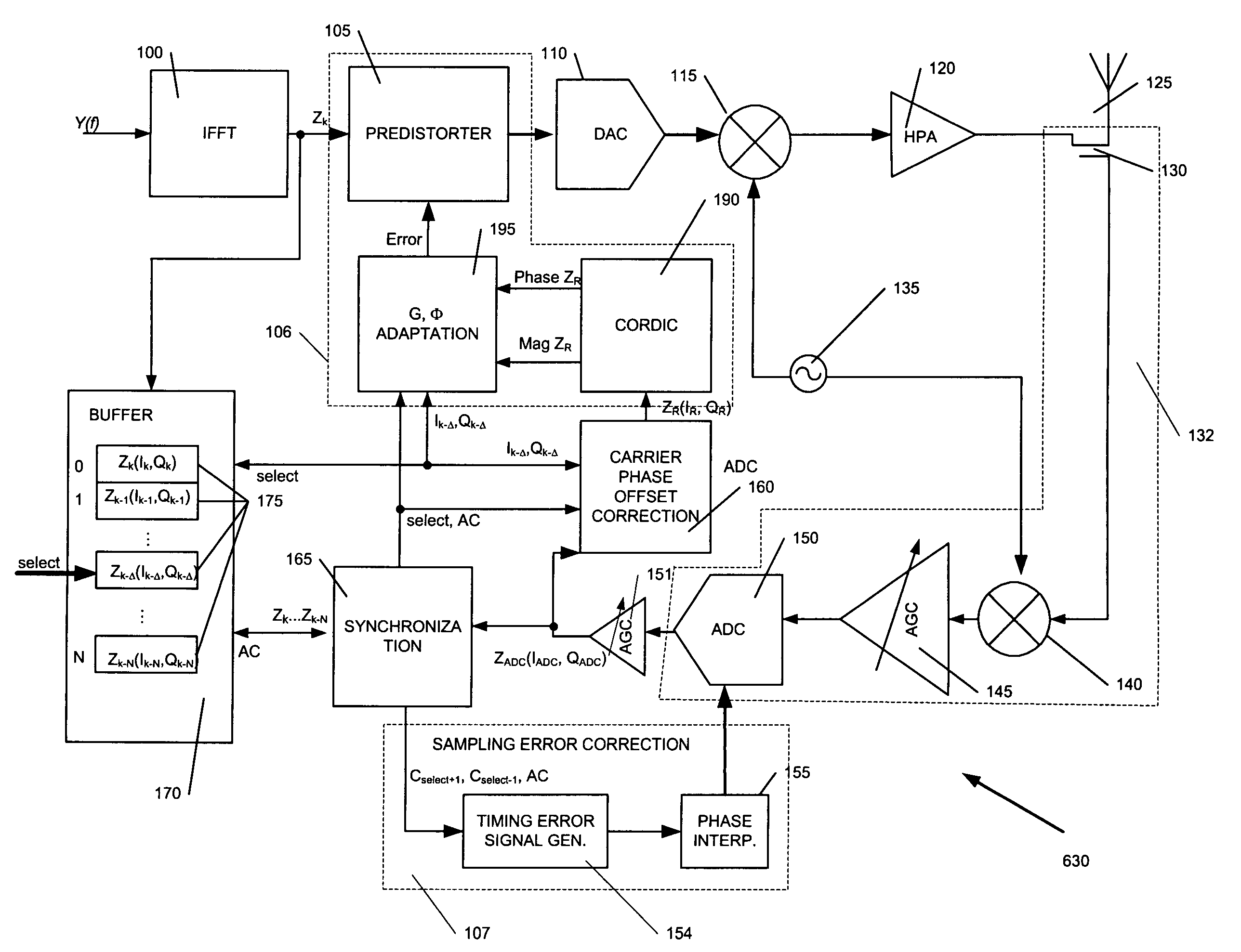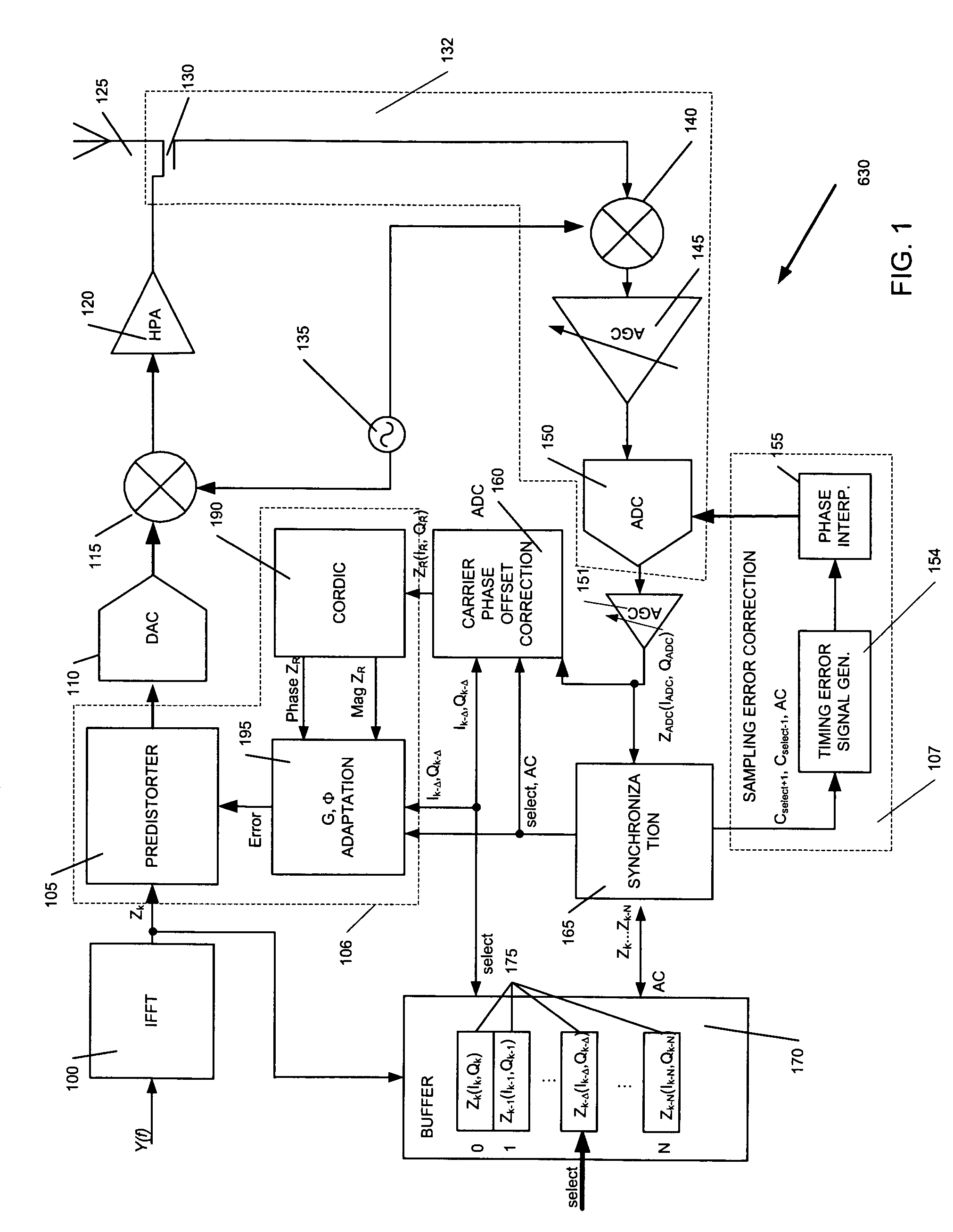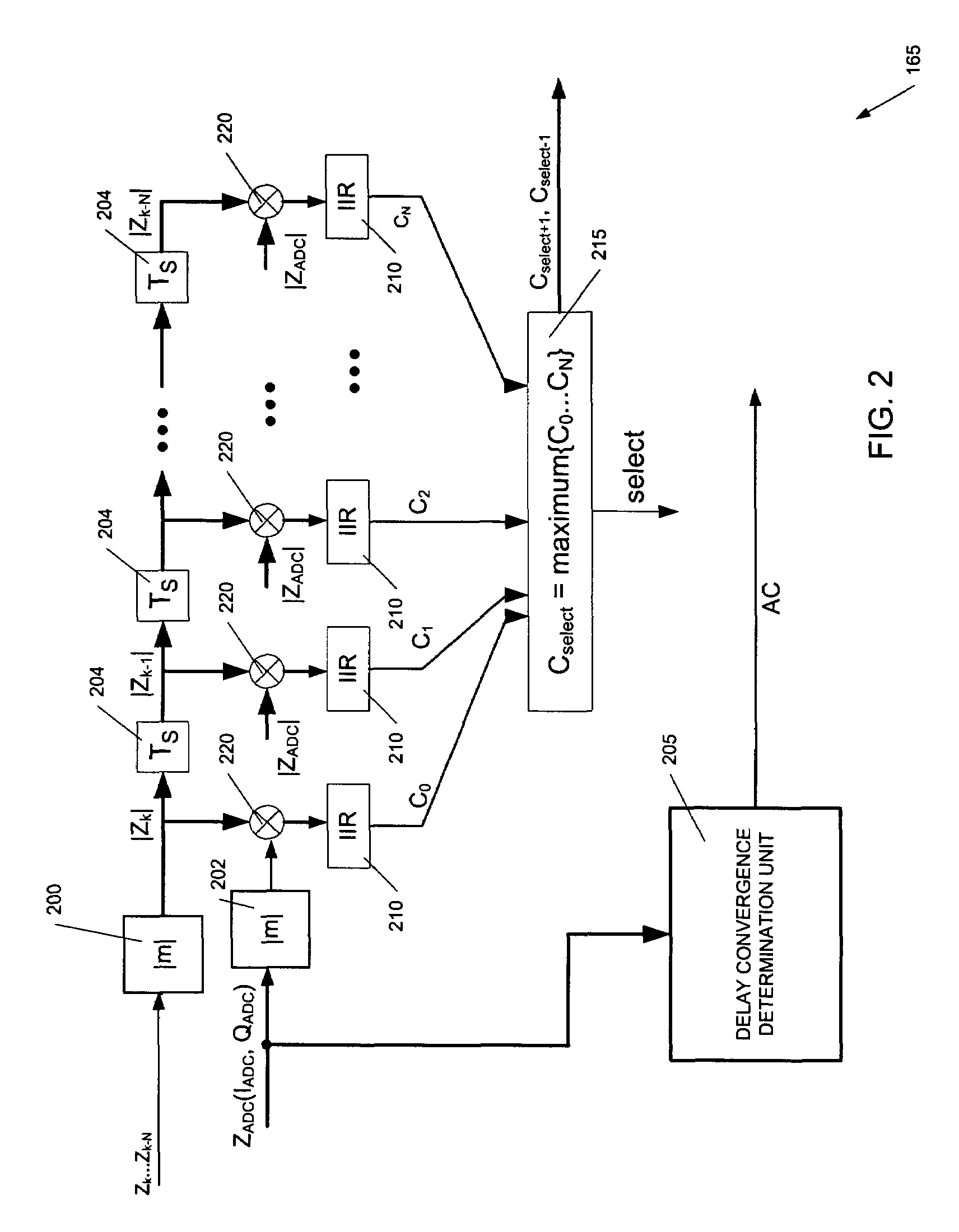Method and apparatus for amplifier linearization using adaptive predistortion
a linearization and adaptive technology, applied in the field of wireless communication, can solve the problems of reducing the generated signal strength, the effective range, and ultimately the utility of the wireless transmission system, and reducing the effective throughput, so as to achieve more linear gain response, precise and updateable determination of delays, and precise and aggressive adaptive predistortion
- Summary
- Abstract
- Description
- Claims
- Application Information
AI Technical Summary
Benefits of technology
Problems solved by technology
Method used
Image
Examples
Embodiment Construction
[0024]Turning first to FIG. 1, FIG. 1 depicts a linearizing amplifier 630 according to a first embodiment of the invention. Here, though not required as will be appreciated by those ordinarily skilled in the art, input signal Y(f) is presented as a multi-carrier OFDM-encoded digital signal waveform compliant with IEEE 802.11a (1999) and Draft IEEE 802.11g (2002) transmission rate standards This input signal Y(f) presents data intended for modulation, amplification and transmission in analog form consistent with these IEEE 802.11a and 802.11g standards.
[0025]An inverse fast Fourier transform (“IFFT”) unit 100 converts the frequency domain input signal Y(f) into a corresponding baseband digital waveform in the time domain as is well known in the art on a per sample basis. As shown in FIG. 1, the output of the IFFT 100 per unit time is shown as complex waveform sample Zk, and referred to generically herein as input signal samples or input samples. Specific input samples processed by th...
PUM
 Login to View More
Login to View More Abstract
Description
Claims
Application Information
 Login to View More
Login to View More - R&D
- Intellectual Property
- Life Sciences
- Materials
- Tech Scout
- Unparalleled Data Quality
- Higher Quality Content
- 60% Fewer Hallucinations
Browse by: Latest US Patents, China's latest patents, Technical Efficacy Thesaurus, Application Domain, Technology Topic, Popular Technical Reports.
© 2025 PatSnap. All rights reserved.Legal|Privacy policy|Modern Slavery Act Transparency Statement|Sitemap|About US| Contact US: help@patsnap.com



